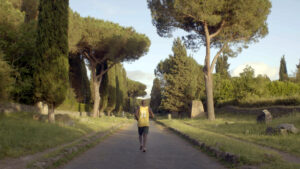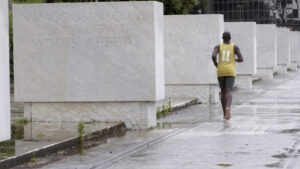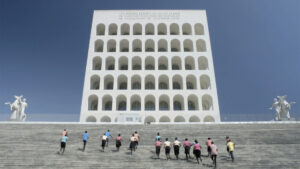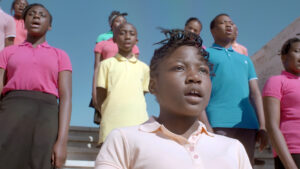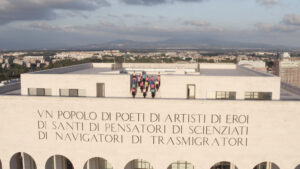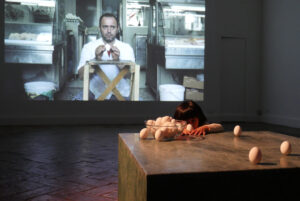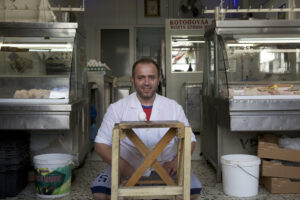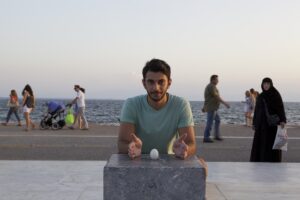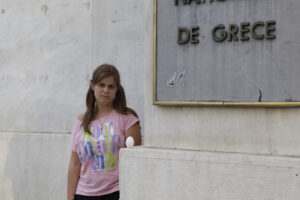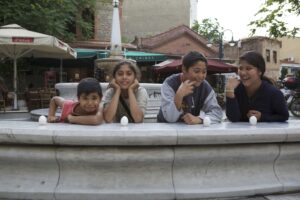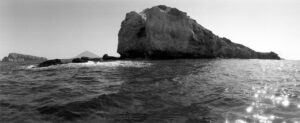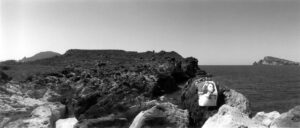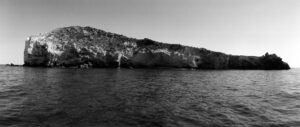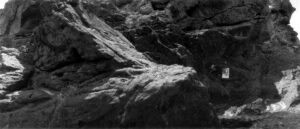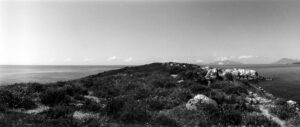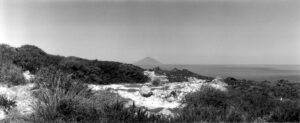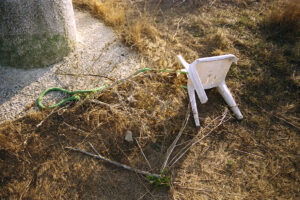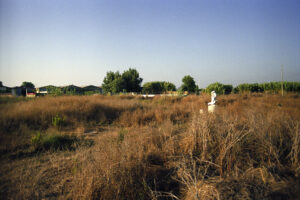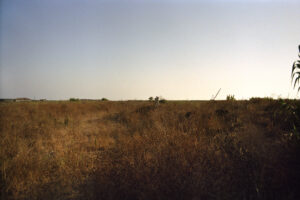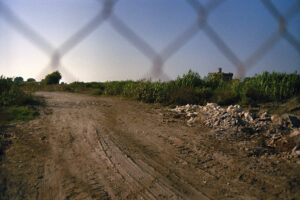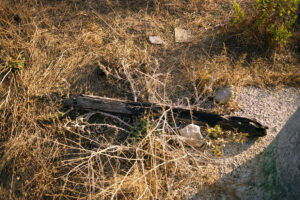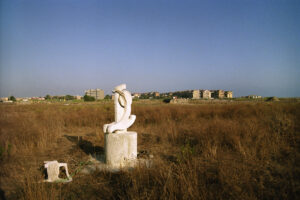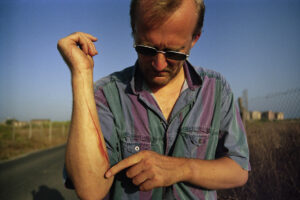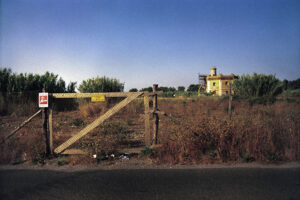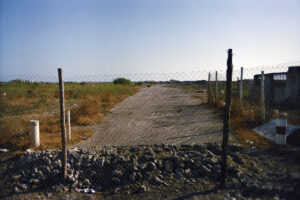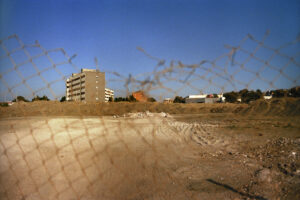The Berlin-based artist duo Nina Fischer & Maroan el Sani have been collaborating on their interventional and situationist art practice since 1995. Their investigations revolve around moving images as both impartial documents and involved narrations of our changing societies. The main protagonists of their projects are often urban spaces that bear the burden of collective memory, upon which the forces of historical transition and turmoil have been engraved. The artists’ poetic-filmic and performative investigations of these sites tackle the idea of revisiting blind spots in contemporary society through their artistic reanimation of such places.
International art exhibitions they have participated in include Manifesta 13, Marseille 2020, Videonale, Bonn 2019, Media City Seoul Biennale 2014, 2012, Aichi Triennale 2013, Istanbul Biennial 2007, Gwangju Biennale 2008, 2002, 1995, Sydney Biennale 2002, Liverpool Biennial of Contemporary Art 1999, Berlin Biennale 1998. Solo exhibitions include Edith Russ Haus for Media Art, Oldenburg 2019, Maxxi Museum, Rome 2017, K21 – Kunstsammlung Nordrhein Westfalen, Düsseldorf 2016, Museum of Contemporary Art Hiroshima, 2010, Stedelijk Museum Bureau Amsterdam 2007, Photographic Art Museum, Tokyo 1998.
Freedom of Movement
Video, HD, 29′, stills and trailer
2019
Evoking the Olympic marathon from Rome 1960, in which the Ethiopian runner Abebe Bikila conquered the African continent’s first gold medal, running barefoot and becoming a sporting legend and a symbol of the Africa that was freeing itself of colonialism, Fischer & el Sani have recontextualised amidst Rome’s controversial rationalist architecture, a new race involving refugees and immigrants staking a claim to their freedom of movement. Fischer & el Sani are examining the complexity of ideological, political and architectural implications of Bikila‘s 1960‘s Olympic gold medal run to this day.
Dynamis
Film, video, HD, 22′, 2014, stills, excerpt
2014
In Dynamis, commissioned by the Center for Contemporary Art in Thessaloniki, Fischer & el Sani asked people whom they meet casually in the city of Thessaloniki to take part in a patience exercise, and in this way develop a collective cultural performance.
The setup is simple: One of the countless marble surfaces in open space and some people who join in to try to balance a raw egg, so that it stands upright by itself. Nevertheless the procedure is not so easy; sometimes it takes a few seconds and at other times it can last up to hours or even to total failure. A social balancing act, between standing up and collapsing. A constant rise and fall, figuratively speaking. It takes a permanent concentration, patience and passion to stay on a task until you succeed. It is also a matter of practice and perfection, like a ritual that requires constant commitment.
L'Avventura senza fine
Series of 8 b/w panorama photographs on Alu Dibond, 153 x 64 cm, framed
2000
The uninhabited aeolian island Lisca Bianca, was the key location of Michelangelo Antonioni’s movie L‘Avventura in 1960. A story about a young woman who disappears from this island with no explanation. We pasted posters of this missing character around the island and took panoramic photos on location. A search for a missing, fictive character in a real place.
Il luogo di morte di Pasolini
Series of 11 colour photographs on Alu Dibond, 75 x 50 cm, framed
1999
Il luogo di morte di Pier Paolo Pasolini is a series of photographs which would function as a flip book if the story behind the images were known, if the subtext of the subtitles were to make the transition fluid. Or if the number of photographs were much larger and thus the continuum of the photographic narrative were more present from the outset. In its current form – 11 colour photographs with no subtitles – it is initially the gaps that are present. At first glance, the first and last motifs have nothing in common; no thread connects them. Consequently the viewer is encouraged to fill in the gaps with his imagination to piece the individual images together. (Krystian Woznicki)
